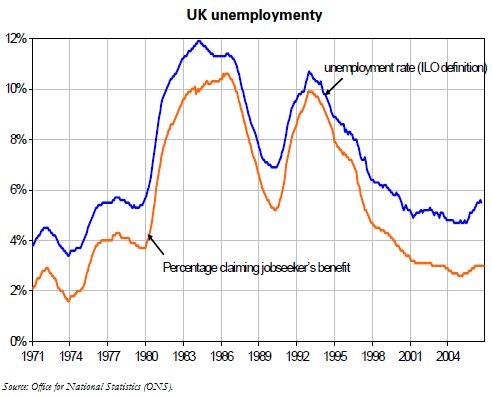Trésor-Economics No. 8 - UK labour market performance
UK unemployment has fallen sharply since it peaked at slightly over 10% in 1993, dropping to 4.7% in mid-2005, its lowest level in 35 years. This fall in unemployment may be viewed as exemplary by comparison with the other large European economies.
UK labour market performance stands out from that of the eurozone in a number of respects: the decline in unemployment has gone hand in hand with a high level of activities and a steep fall in long-term unemployment; activity and employment rates are high at either end of the age spectrum and among women; finally, wage restraint has been maintained despite historically low unemployment.
This performance stems from a combination of structural reforms over the past 25 years and special circumstances that have worked to the UK's advantage at certain periods. The structural reforms have deregulated the labour market, brought down employers' social insurance contributions, and introduced policies to encourage jobseekers to return to work rapidly. These reforms have taken effect progressively.
Other factors have also played their part: the UK economy has grown twice as fast as the continental European countries since the 1990s. Further, there was a massive outflow from the labour market, and no doubt situations of long-term unemployment, resulting from growing recourse to disability benefit mechanisms, between 1993 and 1998. In addition, growth in public sector employment, which has notably resumed since the start of this century, has unquestionably contributed to the fall in unemployment over this period.
Recent developments suggest a reversal of the trend, however; rising unemployment since mid-2005 could be due to a combination of cyclical and structural factors and could therefore persist in the course of the coming months.
